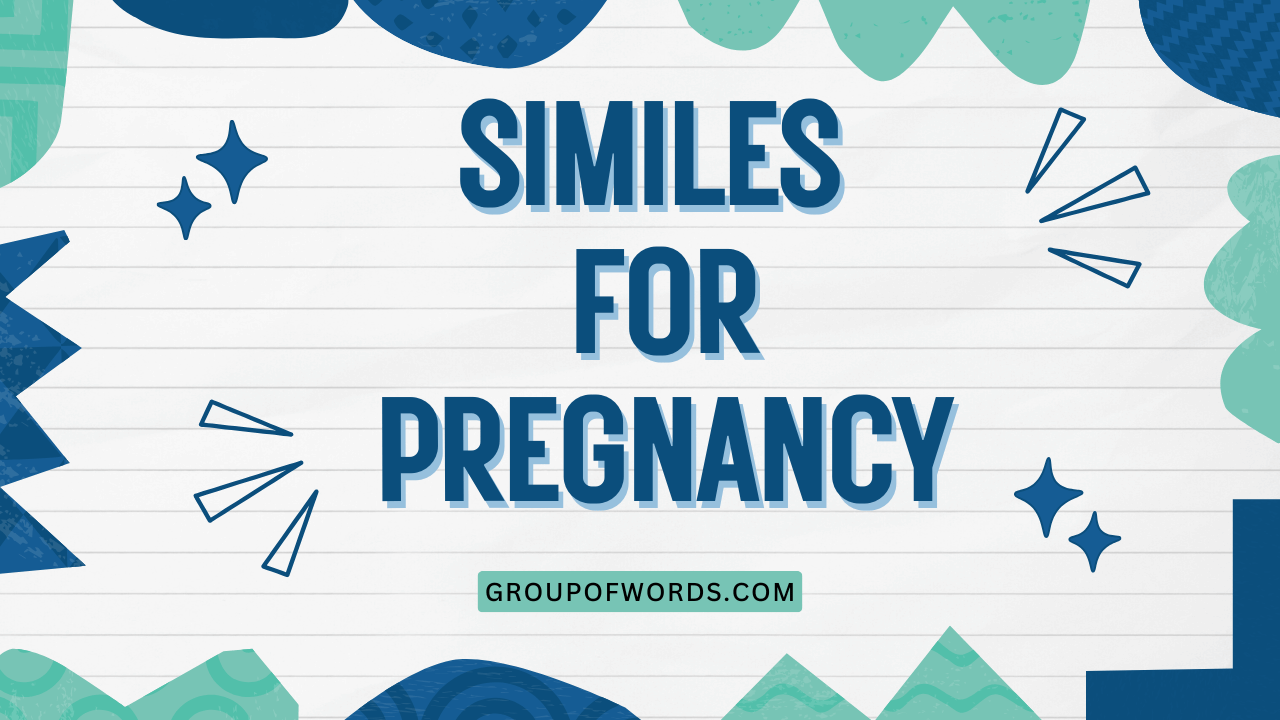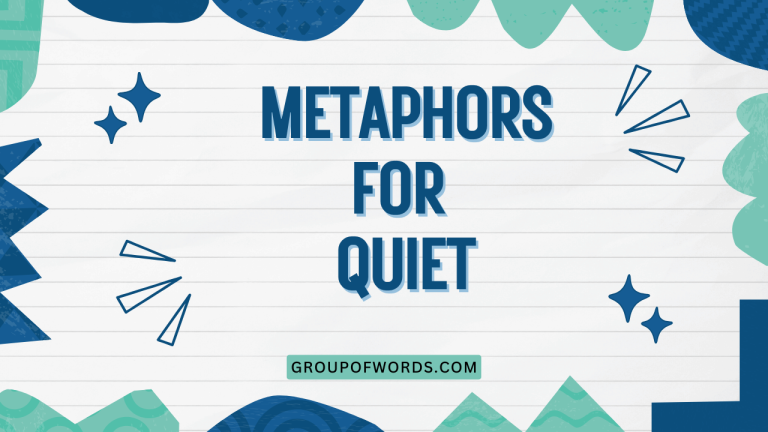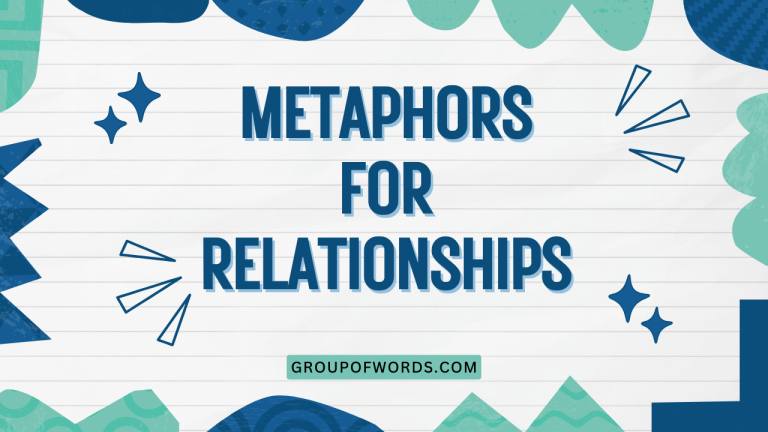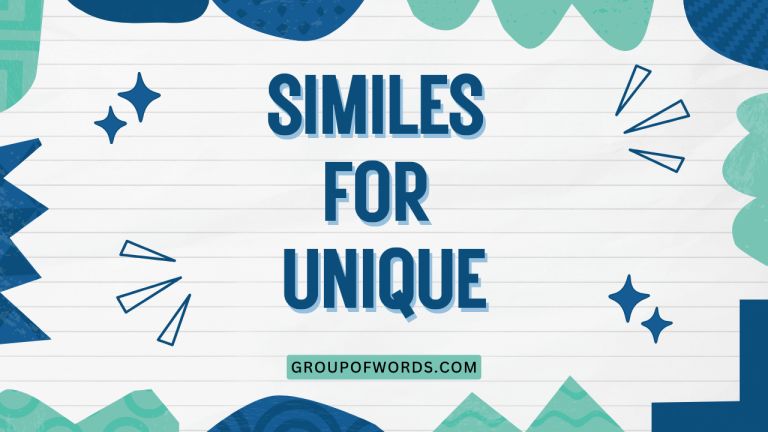Similes for Pregnancy: A Grammatical Guide
Pregnancy is a transformative experience often described with vivid imagery. Similes, with their ability to draw comparisons, provide a powerful tool for expressing the physical and emotional changes that accompany pregnancy.
Understanding how to construct and interpret similes related to pregnancy enhances both descriptive writing and comprehension of metaphorical language. This article explores the grammar of similes in the context of pregnancy, offering numerous examples and practical exercises.
This guide benefits writers, expectant parents, and anyone seeking a deeper understanding of figurative language.
This article will guide you through the intricacies of using similes to describe pregnancy, from their basic structure to more nuanced applications. By the end of this guide, you’ll be equipped with the knowledge and skills to craft compelling and accurate similes that capture the essence of this unique journey.
Table of Contents
- Definition of Similes
- Structural Breakdown of Similes
- Types of Similes
- Examples of Similes for Pregnancy
- Usage Rules for Similes
- Common Mistakes with Similes
- Practice Exercises
- Advanced Topics in Similes
- Frequently Asked Questions
- Conclusion
Definition of Similes
A simile is a figure of speech that directly compares two different things, using the words “like” or “as.” The purpose of a simile is to highlight a similarity between the two subjects, making the description more vivid and relatable. Similes are a type of figurative language, meaning they use words or expressions with a meaning that is different than the literal interpretation.
In the context of pregnancy, similes help to convey the physical and emotional sensations experienced by expectant mothers. They can describe the growing belly, the hormonal changes, the emotional rollercoaster, and the anticipation of childbirth.
By using similes, writers and speakers can create a more profound and empathetic connection with their audience.
Classification of Similes
Similes fall under the broader category of figures of speech, which also includes metaphors, personification, and hyperbole. While both similes and metaphors make comparisons, similes do so explicitly using “like” or “as,” whereas metaphors imply the comparison without these words. The explicit nature of similes often makes them easier to identify and understand.
Function of Similes
The primary function of a simile is to enhance description and create imagery. Similes allow writers to paint a more vivid picture in the reader’s mind by drawing parallels between familiar and unfamiliar concepts.
In the context of pregnancy, similes can help those who have never experienced it understand the physical and emotional realities of carrying a child.
Contexts for Using Similes
Similes are appropriate in a wide range of contexts, including:
- Creative writing: Novels, poems, and short stories often use similes to enrich the narrative.
- Personal essays: Reflective pieces about pregnancy experiences can benefit from the use of similes.
- Conversational language: People often use similes in everyday speech to make their descriptions more expressive.
- Medical literature: While less common, similes can be used to explain complex medical concepts in a more accessible way.
Structural Breakdown of Similes
The basic structure of a simile consists of two parts: the subject being described and the object to which it is being compared, connected by the words “like” or “as.” Understanding this structure is crucial for creating effective and grammatically correct similes.
Key Elements of a Simile
A typical simile includes the following elements:
- Subject: The thing being described (e.g., a pregnant woman’s belly).
- Connecting word: Either “like” or “as.”
- Object of comparison: The thing to which the subject is being compared (e.g., a watermelon).
- Shared quality: The characteristic that the subject and object have in common (e.g., roundness).
Common Simile Patterns
Here are some common patterns for constructing similes:
- Subject + is + like + object: “Her belly is like a basketball.”
- Subject + is + as + adjective + as + object: “She is as radiant as the morning sun.”
- Subject + verb + like + object: “She waddled like a penguin.”
- Subject + verb + as + adverb + as + object: “She slept as soundly as a baby.”
Examples Illustrating Simile Structure
The following table illustrates the structural components of various pregnancy-related similes:
| Simile | Subject | Connecting Word | Object of Comparison | Shared Quality |
|---|---|---|---|---|
| Her belly was like a beach ball. | Her belly | like | a beach ball | Roundness, size |
| She was as tired as a marathon runner. | She | as…as | a marathon runner | Exhaustion |
| She glowed like a beacon. | She | like | a beacon | Radiance, brightness |
| Her cravings were as intense as a wildfire. | Her cravings | as…as | a wildfire | Intensity, uncontrollability |
| She moved as gracefully as a walrus. | She | as…as | a walrus | Awkwardness (humorous) |
| She felt like a ticking time bomb. | She | like | a ticking time bomb | Impending event, anxiety |
| Her feet were like swollen sausages. | Her feet | like | swollen sausages | Swelling, shape |
| Her emotions changed as quickly as the weather. | Her emotions | as…as | the weather | Volatility, unpredictability |
| She ate like a horse. | She | like | a horse | Large appetite |
| She slept as deeply as a log. | She | as…as | a log | Deep sleep |
| Her back ached like it was broken. | Her back | like | it was broken | Intense pain |
| She was as sensitive as a raw nerve. | She | as…as | a raw nerve | Hypersensitivity |
| Her heartburn felt like a dragon’s breath. | Her heartburn | like | a dragon’s breath | Burning sensation |
| She nested like a bird preparing its home. | She | like | a bird preparing its home | Instinctive preparation |
| She was as round as a globe. | She | as…as | a globe | Roundness, fullness |
| Her water broke like a dam bursting. | Her water | like | a dam bursting | Sudden release |
| Her contractions came as regularly as clockwork. | Her contractions | as…as | clockwork | Regularity, predictability |
| She pushed like a warrior in battle. | She | like | a warrior in battle | Strength, determination |
| The baby was as snug as a bug in a rug. | The baby | as…as | a bug in a rug | Comfort, security |
| She felt as powerful as Mother Nature. | She | as…as | Mother Nature | Strength, life-giving ability |
This table breaks down the structure of each simile, highlighting the subject, connecting word, object of comparison, and the shared quality between the subject and the object. Understanding these components helps in creating more effective and meaningful similes.
Types of Similes
While all similes share the same basic structure, they can be categorized based on the type of comparison they make. Understanding these categories can help in choosing the most appropriate simile for a given situation.
Literal Similes
Literal similes compare two things that share a concrete, tangible quality. These are often used for clarity and precision.
Figurative Similes
Figurative similes compare two things that share an abstract or metaphorical quality. These are used to create imagery and evoke emotions.
Humorous Similes
Humorous similes are used to create a funny or ironic effect. They often involve comparing the subject to something unexpected or absurd.
Here’s a table illustrating the different types of similes with examples related to pregnancy:
| Type of Simile | Example | Explanation |
|---|---|---|
| Literal | Her belly was as round as a basketball. | Compares the shape of the belly to a basketball, a tangible object. |
| Figurative | She felt as radiant as the morning sun. | Compares her glow to the sun, evoking a sense of warmth and beauty. |
| Humorous | She waddled like a penguin on land. | Compares her walk to a penguin’s waddle, creating a humorous image. |
| Literal | Her ankles were like tree trunks. | Compares the thickness of her ankles to tree trunks, a tangible object. |
| Figurative | Her patience was as thin as ice. | Compares her patience to thin ice, evoking a sense of fragility. |
| Humorous | She ate like a garbage disposal. | Exaggerates her appetite, creating a humorous image. |
| Literal | Her skin was as smooth as silk. | Compares the texture of her skin to silk, a tangible object. |
| Figurative | She carried the weight of the world in her womb. | Compares carrying the baby to carrying the weight of the world, evoking a sense of responsibility. |
| Humorous | She craved pickles and ice cream like her life depended on it. | Exaggerates her cravings, creating a humorous image. |
This table illustrates how similes can be categorized based on the type of comparison they make, whether literal, figurative, or humorous. Each type serves a different purpose in descriptive writing.
Examples of Similes for Pregnancy
This section provides a comprehensive list of similes related to pregnancy, categorized by the aspect of pregnancy they describe. These examples can serve as inspiration and provide a better understanding of how to use similes effectively.
Similes Describing Physical Changes
Pregnancy brings about numerous physical changes, and similes can help to describe these changes in a vivid and relatable way.
| Simile | Explanation |
|---|---|
| Her belly grew like a balloon being inflated. | Describes the gradual expansion of the belly. |
| Her breasts felt like overfilled water balloons. | Describes the swelling and tenderness of the breasts. |
| Her ankles were as swollen as sausages. | Describes the swelling of the ankles, a common symptom of pregnancy. |
| Her back ached like an old, rusty hinge. | Describes the back pain often experienced during pregnancy. |
| She moved as gracefully as a hippopotamus. | A humorous simile describing the change in mobility. |
| Her skin stretched as tight as a drum. | Describes the feeling of taut skin on the growing belly. |
| Her face was as radiant as a blooming flower. | Describes the “pregnancy glow.” |
| She felt as heavy as a sack of potatoes. | Describes the feeling of carrying extra weight. |
| Her hair was as thick and lustrous as a lion’s mane. | Describes the increased hair growth and shine some women experience. |
| Her veins were as prominent as a roadmap. | Describes the increased visibility of veins. |
| Her belly felt like it was going to burst like an overripe melon. | Describes the feeling of fullness and pressure. |
| Her walk was as wobbly as a newborn foal. | Describes the change in gait due to the shifting center of gravity. |
| Her feet felt like they were on fire. | Describes the burning sensation some women experience in their feet. |
| Her breasts were as tender as a bruise. | Another way to describe breast tenderness. |
| She felt as clumsy as a newborn giraffe. | Describes the feeling of awkwardness due to the changing body. |
| Her belly was as hard as a rock. | Describes the firmness of the belly in later stages of pregnancy. |
| Her breathing was as labored as a runner after a marathon. | Describes the shortness of breath some women experience. |
| She felt as round as a beach ball. | Another way to describe the shape of the pregnant belly. |
| Her legs felt as heavy as lead. | Describes the feeling of heaviness in the legs. |
| Her heartburn was as fierce as a volcano erupting. | Describes the intensity of heartburn. |
| Her uterus contracted like a muscle cramping up. | Describes the sensation of Braxton Hicks contractions. |
This table provides a variety of similes to describe the physical changes that occur during pregnancy, ranging from the growing belly to changes in skin and hair.
Similes Describing Emotional Changes
Pregnancy also brings about significant emotional changes, and similes can capture the intensity and complexity of these feelings.
| Simile | Explanation |
|---|---|
| Her emotions were as volatile as a shaken soda bottle. | Describes the rapid mood swings. |
| She felt as sensitive as a raw nerve. | Describes the increased sensitivity to emotions. |
| Her anxiety was like a constant hum in the background. | Describes the persistent worry and unease. |
| Her joy was as bright as a summer day. | Describes the intense happiness and excitement. |
| She cried as easily as a child. | Describes the increased emotional vulnerability. |
| Her fears were as dark as a moonless night. | Describes the deep-seated worries and anxieties. |
| She felt as protective as a mother bear. | Describes the heightened maternal instincts. |
| Her love for the baby was as vast as the ocean. | Describes the immense and unconditional love. |
| She felt as nervous as an actor before opening night. | Describes the anticipation and anxiety of childbirth. |
| Her mood swings were as unpredictable as the weather. | Another way to describe the rapid mood changes. |
| She felt as vulnerable as a newborn chick. | Describes the feeling of needing protection and care. |
| Her excitement was as bubbly as champagne. | Describes the effervescent joy and anticipation. |
| She felt as overwhelmed as a student facing a mountain of homework. | Describes the feeling of being burdened by responsibilities. |
| Her patience was as thin as ice. | Describes the limited capacity for tolerance. |
| She felt as connected to the baby as if they were one being. | Describes the deep bond between mother and child. |
| Her anticipation was as palpable as the air before a storm. | Describes the intense feeling of waiting for the baby to arrive. |
| She felt as strong as an oak tree. | Describes the inner strength and resilience. |
| Her hope was as unwavering as a lighthouse beam. | Describes the steadfast optimism for the future. |
| Her love grew as steadily as a tree. | Describes the continuous growth of motherly love. |
| She felt like she was riding a rollercoaster of emotions. | Describes the high and low emotions experienced during pregnancy. |
| Her mind was as busy as a beehive. | Describes the constant thoughts and worries. |
This table provides a range of similes to describe the emotional changes that occur during pregnancy, from mood swings and anxiety to joy and love.
Similes Describing Labor and Delivery
Labor and delivery are intense and transformative experiences, and similes can help to convey the physical and emotional sensations involved.
| Simile | Explanation |
|---|---|
| Her contractions came as regularly as clockwork. | Describes the rhythmic and predictable nature of contractions. |
| The pain was like a wave crashing over her. | Describes the intensity and rhythm of labor pain. |
| She pushed like a warrior in battle. | Describes the strength and determination required during labor. |
| Her water broke like a dam bursting. | Describes the sudden release of amniotic fluid. |
| She breathed as deeply as a meditating monk. | Describes the focused breathing techniques used during labor. |
| Her body shook like a leaf in the wind. | Describes the physical tremors experienced during intense labor. |
| She screamed like a banshee. | Describes the intensity of vocalizations during labor. |
| She felt as powerful as a force of nature. | Describes the feeling of strength and capability during childbirth. |
| The baby slipped out as smoothly as a fish. | Describes the ease of delivery in some cases. |
| The relief was like a weight being lifted from her shoulders. | Describes the feeling of release after delivery. |
| She felt as exhausted as after running a marathon. | Describes the physical exhaustion after labor. |
| Her focus was as sharp as a laser beam. | Describes the intense concentration during pushing. |
| Her determination was as strong as steel. | Describes the unwavering resolve to deliver the baby. |
| The pain intensified like a fire burning hotter. | Describes the increasing intensity of contractions. |
| She sweat as profusely as an athlete in training. | Describes the physical exertion during labor. |
| Her cries echoed like a primal scream. | Describes the raw and instinctive nature of labor sounds. |
| She rocked back and forth like a pendulum. | Describes the repetitive motions used to cope with pain. |
| Each contraction felt like a tightening band around her. | Describes the sensation of contractions. |
| She felt as vulnerable as a turtle without its shell. | Describes the feeling of exposure and openness during delivery. |
| The baby’s cry was as sweet as a melody. | Describes the heartwarming sound of the newborn’s cry. |
| She felt like she had been reborn along with the baby. | Describes the transformative experience of childbirth. |
This table offers a variety of similes to describe the intense physical and emotional experiences of labor and delivery, from the regularity of contractions to the feeling of relief after childbirth.
Usage Rules for Similes
Using similes effectively requires adherence to certain grammatical rules. Correct application ensures that the comparisons are clear, logical, and impactful.
Grammatical Agreement
Ensure that the subject and object of comparison have grammatical agreement. If the subject is singular, the object should also be singular, and vice versa.
Correct: Her belly was like a watermelon. (Singular subject and object)
Incorrect: Her belly was like watermelons. (Singular subject and plural object)
Logical Comparison
The comparison should be logical and make sense. The shared quality between the subject and object should be apparent.
Effective: She glowed like a beacon. (Both share the quality of brightness)
Ineffective: She glowed like a stone. (No apparent shared quality)
Avoid Cliches
While similes can be powerful, overusing common cliches can make writing seem unoriginal. Strive for fresh and creative comparisons.
Cliche: She was as busy as a bee.
Original: Her mind was as busy as a beehive.
Clarity and Specificity
Ensure the simile is clear and specific. Avoid vague or ambiguous comparisons.
Vague: She felt like something.
Specific: She felt like a ticking time bomb.
Common Mistakes with Similes
Several common mistakes can undermine the effectiveness of similes. Recognizing and avoiding these errors will improve writing and communication.
Mixing Metaphors and Similes
Confusing metaphors and similes is a common error. Remember that similes use “like” or “as” to make explicit comparisons, while metaphors imply the comparison.
Incorrect: She was a ticking time bomb, like about to explode. (Mixing metaphor and simile)
Correct: She was like a ticking time bomb. (Simile)
Correct: She was a ticking time bomb. (Metaphor)
Illogical Comparisons
Making comparisons that don’t make sense can confuse the reader and weaken the impact of the simile.
Incorrect: Her belly was like a car. (No logical connection)
Correct: Her belly was like a basketball. (Both are round)
Overusing Similes
While similes can enhance writing, using too many can make it feel forced and unnatural. Use them sparingly and strategically.
Overuse: She was like a flower, as radiant as the sun, and her belly was like a balloon.
Better: She was radiant, and her belly resembled a balloon.
Misusing “Like” and “As”
“Like” and “as” have specific roles in similes. “Like” is often used to compare nouns or pronouns, while “as” is used in comparisons involving clauses.
Incorrect: She felt as a balloon about to burst.
Correct: She felt like a balloon about to burst.
Incorrect: She grew like I expected.
Correct: She grew as I expected.
Practice Exercises
These exercises will help you practice identifying and creating effective similes related to pregnancy. Each exercise includes questions and answers to reinforce learning.
Exercise 1: Identifying Similes
Identify the similes in the following sentences:
| Question | Answer |
|---|---|
| 1. Her belly was as round as a globe. | as round as a globe |
| 2. She felt like she was carrying the weight of the world. | like she was carrying the weight of the world |
| 3. Her love grew steadily. | No simile present. |
| 4. She was as radiant as the morning sun. | as radiant as the morning sun |
| 5. Her patience was like a ticking time bomb. | like a ticking time bomb |
| 6. The baby kicked strongly. | No simile present. |
| 7. She moved as gracefully as a walrus. | as gracefully as a walrus |
| 8. The pain felt like a knife. | like a knife |
| 9. Her emotions were complex. | No simile present. |
| 10. She slept as soundly as a log. | as soundly as a log |
Exercise 2: Completing Similes
Complete the following similes with an appropriate comparison:
| Question | Answer |
|---|---|
| 1. Her belly grew like __________. | a balloon |
| 2. She felt as tired as __________. | a marathon runner |
| 3. Her cravings were as strong as __________. | a wildfire |
| 4. She was as radiant as __________. | the sun |
| 5. Her ankles were as swollen as __________. | sausages |
| 6. Her mood swings were as unpredictable as __________. | the weather |
| 7. She felt as protective as __________. | a mother bear |
| 8. Her love was as vast as __________. | the ocean |
| 9. She moved as slowly as __________. | a snail |
| 10. Her heartburn felt like __________. | a dragon’s breath |
Exercise 3: Creating Similes
Create your own similes to describe the following aspects of pregnancy:
| Aspect of Pregnancy | Possible Simile (Example) |
|---|---|
| 1. Morning sickness | Her morning sickness felt like a never-ending rollercoaster. |
| 2. Baby kicks | The baby kicks felt like gentle taps from an angel. |
| 3. Nesting instinct | She nested like a bird preparing its nest. |
| 4. Labor pain | Her labor pain was like a wave crashing over her. |
| 5. First sight of the baby | Seeing her baby for the first time was as breathtaking as witnessing a sunrise. |
| 6. Exhaustion after birth | She felt as exhausted as a runner after completing a marathon. |
| 7. Swollen feet | Her feet were as swollen as balloons filled with water. |
| 8. Emotional vulnerability | She felt as vulnerable as a newborn chick. |
| 9. Cravings | Her cravings were as intense as a magnetic pull. |
| 10. Round belly | Her belly was as round as a watermelon. |
Advanced Topics in Similes
For advanced learners, exploring more nuanced aspects of similes can enhance their writing skills. This section covers complex applications and stylistic considerations.
Extended Similes
Extended similes, also known as epic similes, are longer and more detailed comparisons that span several lines or even paragraphs. They are often used in poetry and prose to create a more elaborate and vivid image.
Example: “Her pregnancy was like a long and arduous journey, filled with moments of excitement and joy, like discovering a hidden oasis in the desert, but also marked by challenges and discomfort, like navigating a treacherous mountain pass, yet ultimately rewarding, like reaching the summit and beholding a breathtaking view.”
Implied Similes
Implied similes suggest a comparison without explicitly using “like” or “as.” The comparison is hinted at through descriptive language.
Example: “She waddled through the room, a penguin on land.” (Implies a comparison without using “like” or “as”)
Subverting Expectations
Skilled writers can create impactful similes by subverting readers’ expectations. This involves using unexpected or unconventional comparisons to create a surprising effect.
Example: “Her patience was as endless as a toddler’s attention span.” (Ironic and unexpected comparison)
Frequently Asked Questions
This section addresses common questions about using similes, providing clear and concise answers.
- What is the difference between a simile and a metaphor?
A simile explicitly compares two things using “like” or “as,” while a metaphor implies the comparison without using those words. For example, “She is like a rose” (simile) vs. “She is a rose” (metaphor).
- Can a simile be too long?
Yes, a simile can be too long if it becomes convoluted or distracts from the main point. Extended similes are acceptable if they add depth and imagery, but brevity is often preferred.
- How can I make my similes more original?
Avoid cliches and think creatively about the qualities you want to emphasize. Consider unexpected or unconventional comparisons that can surprise and engage the reader.
- Is it okay to use similes in formal writing?
Similes can be used in formal writing, but they should be used sparingly and purposefully. Ensure that the similes are clear, logical, and appropriate for the context.
- How do I know if a simile is effective?
An effective simile should enhance the description, create a vivid image in the reader’s mind, and make the writing more engaging. If the simile is confusing or doesn’t add value, it should be revised or removed.
- What if I can’t think of a good simile?
Don’t force it. Sometimes, a direct description is more effective than a weak simile. Consider using other figures of speech or descriptive techniques.
- Can a simile be used to describe abstract concepts?
Yes, similes can be used to describe abstract concepts by comparing them to concrete things. This can make the abstract concept more relatable and understandable.
- Are there any cultural considerations when using similes?
Yes, some comparisons may be more relevant or understandable in certain cultures. Be mindful of your audience and choose comparisons that are likely to resonate with them.
Conclusion
Mastering the use of similes can significantly enhance your descriptive writing, especially when portraying the multifaceted experience of pregnancy. By understanding the structure, types, and usage rules of similes, you can craft vivid and relatable comparisons that resonate with your audience.
Avoiding common mistakes and practicing regularly will further refine your skills.
Whether you are a writer, an expectant parent, or simply someone interested in language, the ability to use similes effectively opens up new avenues
for expression and understanding. Embrace the art of comparison, and let your words paint a thousand pictures.






